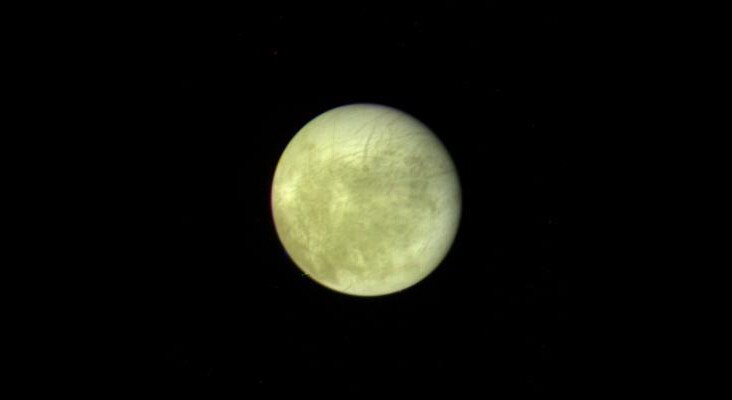It's an icy inhospitable world, a little smaller than our own Moon: Europa. It's one of Jupiter's four largest satellites, the Galilean moons named after the polymath astronomer who discovered them in 1610. At the surface, the temperature never climbs above about -160º C (-256º F), yet it's thought that beneath the frozen epidermis there could be a liquid saltwater ocean. Were that the case, Europa would be about the best candidate for extraterrestrial life in the Solar System, albeit life in microbial form. That Europa could harbor life isn't news. That NASA is now considering landing a robot on Europa's surface is, and the agency has one or two ideas about what a robot should do when it gets there.
Like any robot designed for extraterrestrial exploration, a Europa lander would be armed to the teeth with a sensors and analytical equipment. But settling on the particular loadout really depends on what you want to find out. Every sensor and every gadget embodies a question to which we don't yet know the answer.

NASA has identified three priorities for a robot lander on Europa: discover the makeup of minerals and organic matter present on the moon; examine the geophysics of the ice and the ocean underneath; and determine how the geology looks (and therefore how it might have evolved) at a human scale on the surface. That may sound dry, but NASA says that this really boils down to looking at chemistry, water and energy, or in other words, the conditions necessary for life.
NASA has not announced a mission to soft-land a robot on Europa, but it has begun to put out its feelers. A new article by NASA scientists published in the peer-reviewed journal Astrobiology entitled Science Potential from a Europa Lander sets out these research goals in more detail, and speculates how they might be practically achieved. Though the theme of life runs throughout the paper (the word appears 33 times excluding the references section), the focus is very much on microbial natives and not, despite reports to the contrary, potential human habitation.

One area of focus would be Europa's distinctive linear surface cracks. These are believed to be caused by tidal forces, a result of Europa's eccentric orbit about Jupiter causing very high tides when the moon passes closest to the gas giant. It's thought that this process would generate the heat in the ocean necessary for simple life to survive there. NASA thinks the cracks could contain biological makers, molecules indicating the presence of organic life, which have come from the ocean.
Alas it's not as simple as rocketing a robot off to Europa. To ensure that such a mission would maximize returns requires that a "scientifically optimized" landing site is identified, and to do that, Europa's surface must be thoroughly surveilled. Thus far, the little we know and think about Europa is based on a handful of flybys by Voyager 2 in the 70s and the Galileo probe in the 90s.
"There is still a lot of preparation that is needed before we could land on Europa, but studies like these will help us focus on the technologies required to get us there, and on the data needed to help us scout out possible landing locations," said lead author Robert Pappalardo of NASA's Jet Propulsion Laboratory. "Europa is the most likely place in our solar system beyond Earth to have life today, and a landed mission would be the best way to search for signs of life."
Source: NASA









